The striking scenery of HBO's "Game of Thrones"
has inspired scores of travelers to retrace their favorite characters' journeys
across The Seven Kingdoms.
While Dubrovnik in Croatia has become famous as King's
Landing and Iceland for the land beyond The Wall, the diverse
landscapes of Spain's 17 regions have provided some of the most awe-inspiring
locations of the series.
What's more: The real-life histories of these travel spots are
nearly as intriguing as their Westerosi lore.
Formidable castles, treacherous seaside sanctuaries and
mysterious ruins all contained within the Kingdom of Spain represent
the "Game of Thrones" world in all its glory and high-stakes drama.
As the series draws to a close, HBO has guarded Season 8's
secrets closer than ever. But a recent visit to some of Spain's most pivotal
filming locations offered this fan some hints of what's in store:
San Juan de Gaztelugatxe in Bermeo, beaches of Basque
Country | Dragonstone
Beaches representing Dragonstone Island can be found along
the Basque Country's coast, and the area is a sight to behold.
Itzurun Beach in Zumaia boasts dramatic 500-feet limestone
cliffs that look like dragon scales, while the secluded but easily accessible
Muriola Beach in Barrika washes away completely at high tide.
The centerpiece, San Juan de Gaztelugatxe in Bermeo along
the Bay of Biscay, boasts a snaking stone staircase that leads to the peak of
the striking islet. This is what stands as the site for the main Dragonstone
Castle.

At San Juan de Gaztelugatxe, a stone staircase snakes its
way to the peak of the striking islet used as the site for the main Dragonstone
Castle.
About 20 miles north of Bilbao, Gaztelugatxe is best visited
by car in the morning or afternoon. A scenic 30-45 minute hike from the parking
area to the base of the stairs provides a suitable area for picnicking.
While the walk can be tiring, it's not terribly difficult as
demonstrated by the number of children and dogs on trail. There's no grand
castle at Gaztelugatxe's peak, but there is a chapel dedicated to local
fishermen. After hiking up the 237 steps, adventurous visitors can ring a bell
three times to make a wish.
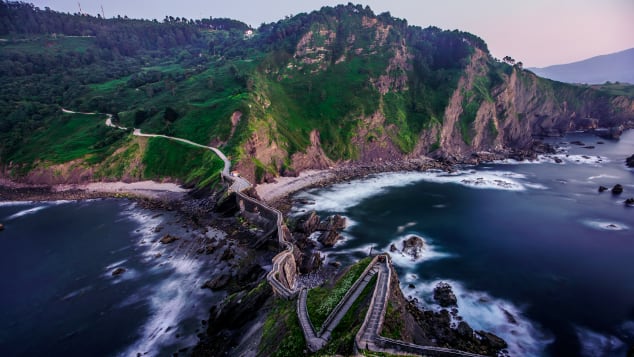
Beaches representing Dragonstone Island are so beautiful
that there's a good chance that even people who don't watch "Game of
Thrones" will enjoy a stop here.
"The Craggy Fort," as San Juan de Gaztelugatxe
translates to, dates as far back as the 9th century. Over the years it has been
witness to a fair share of real-world conflict. In 1334, it was where The Lord
of Biscay, Juan Núñez de Lara, confronted the King of Castile, Alfonso XI, in
battle. In 1594, Huguenots ransacked it, tossing a squatter off the cliffs to
meet his death. In 1937, during the Spanish Civil War, navy battles were fought
here.
Featured throughout the "Game of Thrones" series,
the full grandeur of Dragonstone Castle wasn't glimpsed until early in Season 7
when Dragon Queen Daenerys Targaryen returned to her birthplace and ancestral
homeland. Most significant is the mountain of dragonglass it's built upon.
Dragonglass one of the only materials known to kill White Walkers in the
"Game of Thrones" world. The mining of this precious resource makes
Dragonstone one of the most pivotal locations heading into the final season.
Related content
Roman ruins of the Italica Amphitheatre outside Seville |
The Dragonpit of King's Landing
The once-lost Roman city of Italica was known to have
existed near Seville, but its exact location remained a mystery for years.
Founded in 206 BC, the city was the birthplace to perhaps three Roman
Emperors: Trajan, likely Hadrian and possibly Theodosius. The Amphitheater
held 25,000 people and was considered a pivotal meeting point. In "Game of
Thrones," it's also a significant meeting place.
Within walking distance just a few miles outside of Seville,
the ruins are also a short bus ride from the city center. The grounds are
closed on Mondays but open from 9 a.m. to 5:30 p.m. Tuesday through Saturday
and from 10 a.m. to 4 p.m. on Sundays. Admission includes exploration of the
gladiator pits but not access to the amphitheater's grandstand.
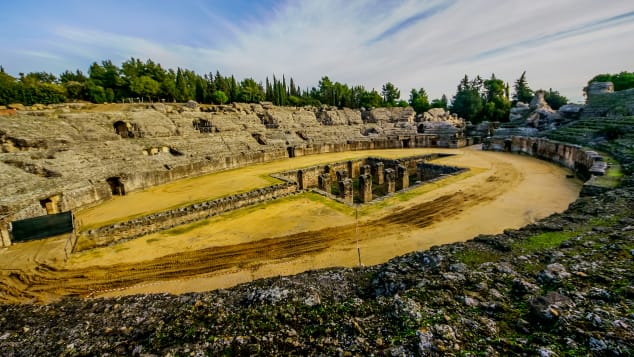
Located outside of Seville, the ruins of the Italica
Amphitheatre are open to the public. The area serves as the location of the
show's Dragon Pit.
Over the years, Italica's stone and marble were transported
to Seville for infrastructure improvements to its buildings, river dams and
roads. While buried statues were discovered in the late 1700s and excavations
began in the 1850s, it wasn't until the 1970s that a whole town was unearthed.
No longer lost, the city of Italica now stretches into the
nearby countryside, maybe even as far as surrounding town of Santiponce. While
no standing structures from the city itself survived, their framework remains amazingly
intact with impressively preserved mosaics lining the floors of former
buildings discovered daily.
The picked-apart ruins of this historic place represent the
show's charred Dragonpit. In the final episode of Season 7, "The Dragon
and the Wolf," the various claimants to the throne gathered in King's
Landing at the remains of the Dragonpit to negotiate how to handle the
impending threat of the undead White Walkers marching across the continent.
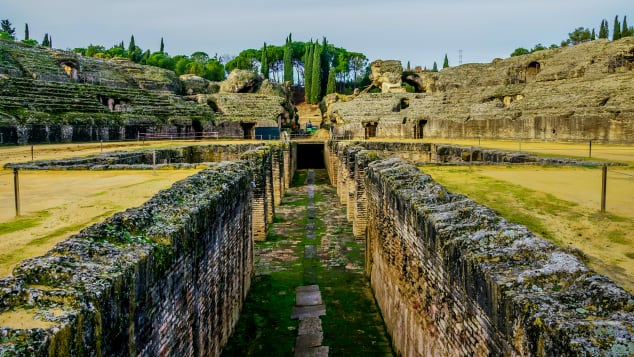
An important episode of Season 7 involved negotiations in
the Dragonpit on how to handle the impending threat of the undead White Walkers
marching across Westeros.
Tensions ran high throughout this episode as the allied
forces of Daenerys Targaryen and Jon Snow presented Queen Cersei Lannister with
a viable White Walker they'd captured. Their goal was to demonstrate the threat
of the zombie-like creatures and the need to band together as a result.
Featuring more main characters than any other "Game of Thrones" scene
up to this point, several prominent players met for the first time, while other
fan-favorites reunited following long journeys apart.
Production returned to Italica in May 2018 under heavy
secrecy. Some characters rumored to have been included in scenes filmed last
spring suggest perhaps that the site of this grand meeting could be revisited
in Season 8 for a similarly scaled battle.
Related content
Trujillo Castle in Caceres, Extremadura | Casterly Rock in
The Westerlands
The medieval Trujillo Castle sits proudly atop a hill in the
city it's named for in the Extremadura region. Northwest of the Andalusia
region of Spain, the area is woefully overlooked by many visitors, but it
rewards those who do make it a stop.
For starters, Extremadura's idyllic landscape is responsible
for producing some of Spain's finest foods. It's said a monkey could swing all
the way to Madrid without leaving the branches of the region's many citrus
trees.Tthe region's cheeses are celebrated as some of Spain's most complex, and
it's the birthplace of one of the first producers of Jamón Ibérico (cured ham).
And of course, there's the castle. Built between the 9th and
12th centuries on a former Muslim citadel, its imposing structure looms. The
traditional fortress' intact square towers are built of large granite, and the
entirety of the rooftop perimeter is accessible.
Specific daytime hours at the castle change seasonally, but
you'll want to plan your visit around a midday closing for siesta.
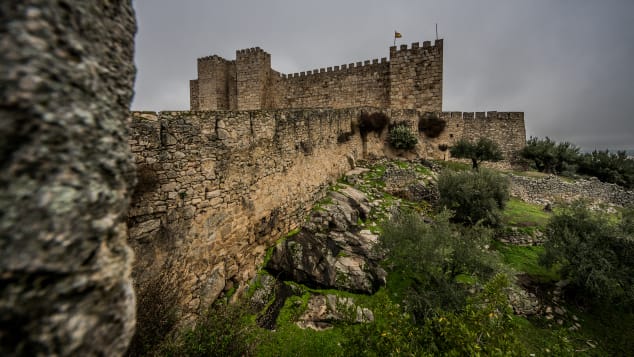
In Season 7 of "Game of Thrones," Trujillo Castle
is reimagined as Casterly Rock in the Westerlands. The now infamous saying
"a Lannister always pays his debts" derives from this location.
A chapel added in the 16th century is home to a statue of
the Virgin Mary holding a baby Jesus known as Virgen de la Victoria, and
depicts a vision of Mary said to have appeared over the town. For a euro, the
statue will rotate on a mechanical platform to look straight out of the window
where it'll appear to keep watch over the city.
Once a year, in late August or early September, the statue
is paraded into the town square for a festival celebrating the Virgen de la
Victoria.
"Game of Thrones" filmed extensively in
Extremadura in Season 7, with nearby Caceres providing the narrow streets for
King's Landing, and Los Barruecos Natural Monument serving as the site for the
Battle of the Dragon.
Casterly Rock, the mighty House Lannister, was built atop a
gold mine in the Westerlands on a rocky promontory. The source for the
families' immense wealth, it is where the memorable saying "a Lannister
always pays his debts" derives from. Legendary for having never fallen in
battle, it was surprising when Jaime Lannister allowed it to be taken by
Daenerys Targaryen's forces in the seventh season, even though he did correctly
assume they would abandon it shortly thereafter.
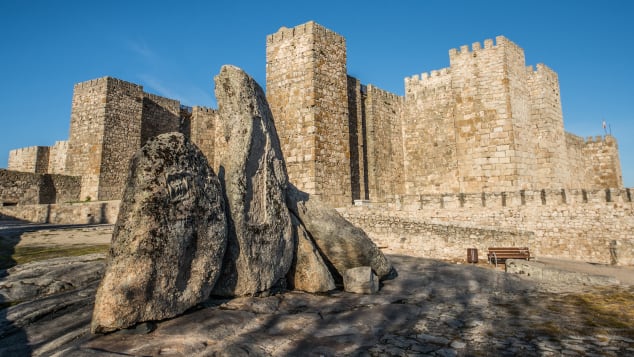
Built between the 9th and 12th centuries on a former Muslim
citadel, Trujillo Castle's imposing structure looms large over the city.
It seems unlikely that such a powerful seat of one of the
remaining Great Houses would finally be revealed only for this Pyrrhic victory,
but chances are this moment was just a first glimpse of the location's
strategic significance.
Girona Cathedral in Girona | The Great Sept of Baelor in
King's Landing and The Streets of Braavos.
The Catalan city of Girona provides a relaxing respite from
bustling Barcelona, and it's just a 40-minute train ride to the northeast. With
far fewer tourists, the town of 100,000 regularly ranks at the top of Spain's
quality of life survey. Colorful buildings along the River Onyar and gardens
covering the Old Quarter's medieval walls and watchtowers have made it an
irresistible stop on any Costa Brava excursion.
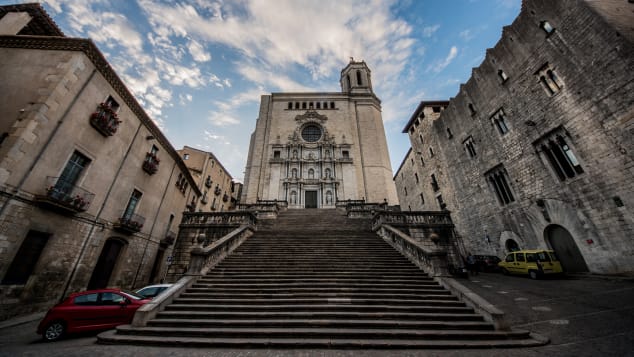
About 40 minutes by train from Barcelona lies the city of
Girona, with an imposing cathedral at its city center.
In the center of the city, Girona Cathedral was the site of
a primitive Christian church before Islamic conquests had it converted to a
mosque. Later, it was repossessed by the church. Romanesque in design at first,
it later took on the Gothic style. The cathedral's dramatic stairway seems to
lead to a heavenly plane and is a favorite of local runners.
"Game of Thrones'' fans will instantly recognize the
cathedral as The Great Sept of Baelor.
In addition to King's Landing, the city of Girona's old
quarter walkway represented the Free City of Braavos in Essos, a continent away
from the kingdoms. Just around the corner from the cathedral is where a
temporarily blinded Arya Stark trained to become a Faceless Man with the intent
of impersonating victims with eerie masks made of their faces.
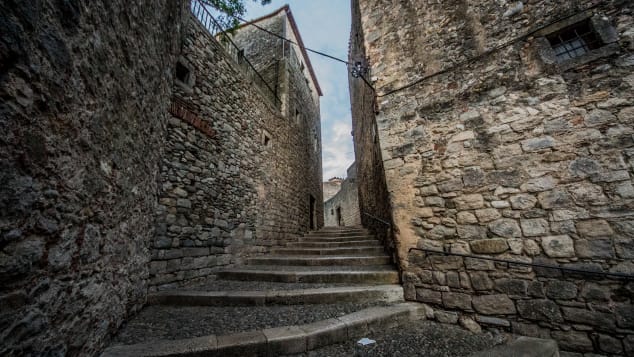
'Game of Thrones'' fans will instantly recognize the
cathedral as The Great Sept of Baelor.
One of the most outstanding real-life stunts in the show
also occurred in this location when Jaime Lannister confronted religious zealot
the High Sparrow. Riding his horse directly up the cathedral's steps to face
down the leader of The Faith Militant, it supposedly took a stunt double
several days to train the horse to climb the harrowing 91 steps. The result is
a jaw-dropping scene that stands as an iconic moment of the series.
Related content
The Sept has bared witness to many of the most shocking
moments in the Seven Kingdoms.
It was in front of the Sept that Ned Stark was beheaded in
front of a crowd by the order of King Joffrey. Throughout the series weddings,
funerals and even trials took place at the Sept, until Cersei, wanting to avoid
her own trial and kill her enemies, ignited it with underground barrels of the
explosive wildfire. This bold move shook the city's foundation and reset the
series' status quo by enabling Cersei to take the throne for herself.
However, it's possible that its destroyed remains will be
glimpsed. Leaked photos from the sound stage used for filming in
Belfast, Ireland, revealed recreations of the same area of King's Landing. The
buildings were set ablaze in a massive fire as part of filming, a rumored
battle scene said to feature 500 extras.
Castle of Zafra in Guadalajara | Tower of Joy in Dorne
Reserved for the most dedicated fans of the award-winning
show, the remote Castle of Zafra, scene of Tower of Joy in Dorne, requires a careful
trek. The closest village is Hombrados, a municipality with 44 inhabitants, and
an unpaved road leading up to the castle isn't easy for most vehicles besides
ATVs, and those aren't exactly readily available.
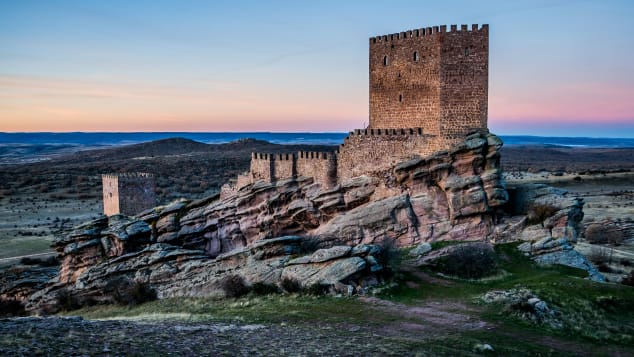
It's a trek to reach the remote Castle of Zafra in
Guadalajara, but serious fans won't mind the half-day trek to the top.
Diehard fans should be prepared for up to a half day's hike
to access the outcrop. The reward is an absorbingly immersive location, with
little separating the real-life and fantasy settings.
Much like its position in the series, the stand-in for the
Tower of Joy, Castle of Zafra seems to reside in the past. From its hilltop
location, the vast surrounding expanse of the countryside is visible in all
directions. Artifacts dating back to the Bronze and Iron Ages have been found
nearby, and it's believed Romans occupied the rock formation before the
structure was built.
The earliest fortress was established by the Visigoths and
later the Moors held a fortification until it was conquered by Christian
kingdoms in the Reconquista. At its peak it was believed to host up to 500 men.
After unification the castle lost its strategic importance and fell into
continuous disrepair following the 16th century.

It's not easy to reach the Castle of Zafra, but it's very
rewarding when you finally arrive.
In 1971, the castle was purchased from the Spanish
government by Don Antonio Sanz Polo, a descendant of the 15th century owner Don
Juan de Hombrados Malo, whose family retained documents of ownership for some
400 years. He poured his fortune into restoring the castle to its 12th century
glory.
On "Game of Thrones" the Tower of Joy was the
place of one of the most pivotal reveals in the series. When Prince Rhaegar
Targaryen (Daenerys' brother) and Lyanna Stark (Ned Stark's sister) married in
secret, they took to the castle in the Red Mountains of Dorne to hide their
forbidden love.
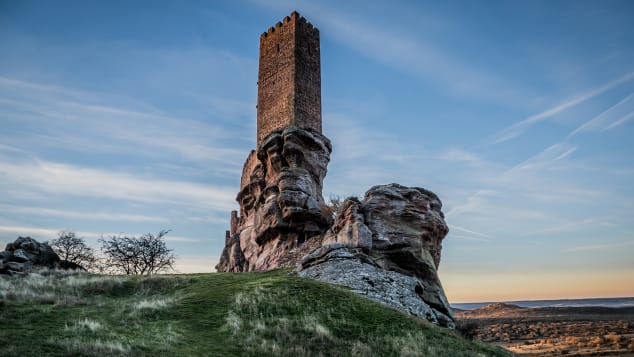
After Prince Rhaegar Targaryen (Daenerys' brother) and
Lyanna Stark (Ned Stark's sister) married in secret, they took to the castle
known as the Tower of Joy in the Red Mountains of Dorne to hide their forbidden
love.
Related content
Years later, Ned's son Brandon Stark, blessed with powerful
magic and the ability of a Greenseer to perceive the past, glimpsed back to see
his father storm the castle. Believing his sister had been kidnapped, Ned
battles his way to Lyanna in the tower. Dying from childbirth, Lyanna's final
breath names her child Aegon Targaryen and makes Ned promise to pass him off as
his own bastard to protect her son. This child would become known as Jon Snow.
Witnessing this flashback Brandon is able to discern Jon/Aegon is actually the
rightful heir to the Iron Throne.
Who will rule Westeros will be settled when "Game of
Thrones" returns to HBO for its six-episode, eighth and final season on April 14.












